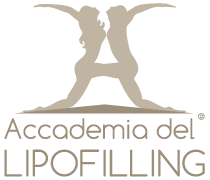Stem cells are fascinating and elusive. To study them, researchers initially applied traditional methods, but quickly realized they needs to be adjusted to complied with the features of this new field of research. This process of technological and methodological innovation continues till today and makes this branch of research very dynamic.
The crucial issue to prove the effective presence of stem cells in a tissue and reveal their secrets is the identification of the type of cells with staminal properties. In fact, it is not easy to identify the elements capable of self-renewal and multipotency inside a complex tissue.The stem population, isolated and cultured in vitro, includes a patchwork of different cell types with different stages of differentiation. Most labs use the same techniques of detection and isolation of stem cells: surgical removal of tissue in sterile conditions, digestion in collagenase/dispase, detection and selection by selective markers. For example, the stem cells from adipose tissue, that express CD34, CD90, CD105, CD73 antigens, are mesenchymal stem cells. A common technique for the isolation of stem cells is the application of flow-cytometers with cell sorter named FACS (fluorescent activated cell sorter). This technique, however, shows considerable limits such as the semi-sterility of sample and the requirement of a white lab room that results hard to apply in clinical practice. In addition, the result of this kind of technique is a suffering cellular populations and moreover, maintenance and managing costs of device are very high.
As an alternative to the selection based on “fluorescent” flags, stem cells can be selected and isolated with magnetic-activated cell sorting antibodies (MACs, magneto-mediated cellular selection). The antibody-bound cells are retained by special magnetic columns while all the others are collected separately. This technique was classified as “clinical grade” and therefore used for clinical practice. Even in this case, the “clinical” limits of this method are the employ of antibodies and the high cost of the equipment.
Stem cell transplantation, as well as being useful as a therapeutic tool for well-defined pathologies (such as hematopoietic stem cells in hematologic diseases), is a very effective method to study how the environment influences the activity of stem cells. Stem cells from adipose tissue can be obtained directly from the adipose tissue avoiding to use the so-called white lab room. Consequently, attention is increasingly focused on non-enzymatic close – systems because they represent the safest and most effective way to purifying adipose tissue without the aid of collagenase and for cytotoxicity (spongiform encephalopathy) and for comparable efficacy. To date, no system seems to reach the ideal features which meet the requirements by the International Federation for Adipose Therapeutics and Science (IFATS) and the International Society for Cellular Therapy (ISCT).
New and promising devices allow to select and isolate stem cells without using fluorescent dyes. One of these is based on a “pure” system of mechanical tissue disintegration, very easy to use and less expensive and faster. The “Rigenera” protocol consists of four phases: 1) tissue collecting; 2) tissue disaggregation into the “Rigeneracons”; 3) collecting of micro-grafts obtained after mechanical disaggregation; 4) injection of micro-grafts into the lesion site and/or in combination with special scaffolds. It has been shown that micro-fractionated human adipose tissue doesn’t change the structures of stromal cells, but gets started a series of molecular changes that increase the natural regenerative properties of the receiving tissue.
Another system includes the Q-graft associated Body-Jet, an intraoperative automatic separator, let the isolation of the stromal vascular fraction inside the adipose tissue. This is a liposuction procedure that uses the tumescent solution as a pulsed and thin jet. Small clusters of fat cells are selectively “washed” and “aspired” in a close-sterile system. In this way the aspirated adipose tissue and the irrigation fluids are separated in vacuum conditions that don’t need for centrifugation or any additional fat treatment before its reimplantation. Later, the adipose tissue is transferred to a mechanical separator called Q-graft. This system requires an incubation of adipose tissue at 38°C for 45 minutes and a subsequent filtration to obtain the SVF, with a considerable reduction of traumatism which influences the survival of fat cells. The use of adipose micro-clusters reveals a great tolerability and viability of favoring the grafting through a better vascular micro circulation.
Dr. Francesco de Francesco; Dr. Michele Riccio;
